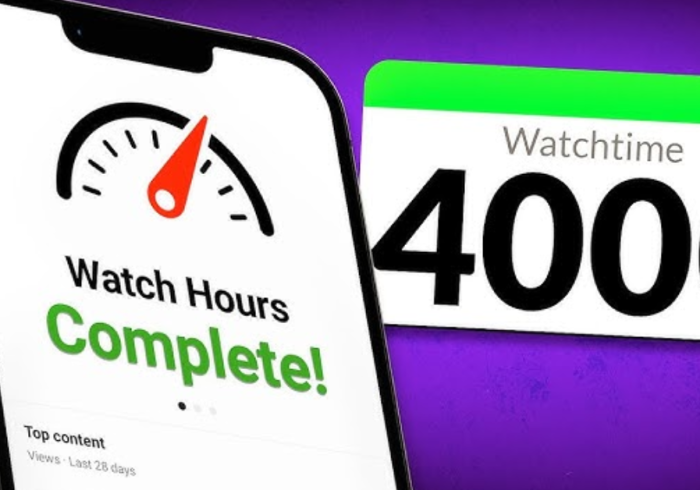Monetizing on YouTube is one of the most popular ways for creators to earn income online. However, understanding how much you can earn per 1,000 views can be a bit complex, as it depends on multiple factors, from viewer demographics to advertiser demand. Here’s an in-depth look at how YouTube pays for views, how the AdSense model works, and the variables that influence earnings.
1. How YouTube Monetization Works: YouTube Partner Program and AdSense
- YouTube Partner Program (YPP): To start earning through YouTube, you need to join the YouTube Partner Program. To qualify, your channel must meet specific requirements, including at least 1,000 subscribers and 4,000 watch hours over the past 12 months.
- Google AdSense: Once in the YouTube Partner Program, you can start earning money through AdSense. AdSense serves ads on your videos, and YouTube shares a percentage of the ad revenue with you. Typically, YouTube takes 45%, while creators receive 55% of the ad revenue generated by their videos.
2. The Basics of CPM and RPM: Key Metrics for Earnings
- Cost Per Mille (CPM): CPM is the amount advertisers pay per 1,000 ad impressions. This varies widely depending on the type of content, audience location, and seasonality. The CPM rate typically ranges between $0.50 and $10, though it can be much higher in competitive niches.
- Revenue Per Mille (RPM): RPM is the revenue that you, as a creator, actually earn per 1,000 views, after YouTube’s cut. RPM includes all revenue earned on YouTube, including ads, channel memberships, Super Chat, and YouTube Premium revenue.
Formula:RPM=Total Revenue×1000Total Views\text{RPM} = \frac{\text{Total Revenue} \times 1000}{\text{Total Views}}RPM=Total ViewsTotal Revenue×1000
RPM is usually lower than CPM because not every view will show an ad. Some viewers may use ad blockers, and some videos may be served with fewer ads depending on the viewer’s preferences and settings.
3. Average Earnings per 1,000 Views on YouTube
- Standard Range: YouTube creators generally earn between $1 to $5 per 1,000 views. This can vary based on many factors:
- General Audience Content: For general content with a broad audience, you may earn around $1–$2 per 1,000 views.
- High CPM Niches: Topics such as finance, technology, and digital marketing can attract higher-paying ads, leading to CPMs that may reach $10 or more, resulting in RPMs around $5–$7 per 1,000 views.
- RPM Variability: RPM can be affected by viewer demographics, video length, and ad format, among other factors.
4. Factors Influencing YouTube Earnings for 1,000 Views
- Viewer Location: Advertisers pay different rates based on the viewer’s location. For example, views from the United States, Canada, and Europe tend to have higher CPMs than views from countries in Asia or Africa.
- Content Type and Niche: Some niches are more lucrative than others. Videos on topics like personal finance, real estate, and technology tend to attract higher-paying advertisers, while vlogs and entertainment content often have lower CPMs.
- Video Length: Videos longer than 8 minutes allow creators to insert mid-roll ads, which can increase the ad revenue per view.
- Ad Type and Viewer Engagement: YouTube offers various ad types (skippable, non-skippable, display, overlay, etc.). Non-skippable ads and higher engagement from viewers (like clicking on ads) can increase earnings.
5. Ad Types That Affect YouTube Earnings
- Skippable Ads: These ads can be skipped after a few seconds, and creators are paid based on the number of people who view the ad for at least 30 seconds or click on it.
- Non-Skippable Ads: These are short ads that must be watched entirely, often yielding higher CPMs since viewers are required to watch the entire ad.
- Bumper Ads: These are six-second non-skippable ads that are short but can still generate revenue.
- Display and Overlay Ads: Display ads appear next to the video, and overlay ads show up as a small banner at the bottom. These ads often yield lower CPMs than skippable or non-skippable ads.
6. How YouTube Premium Affects Earnings
- YouTube Premium is a subscription service that allows users to watch videos without ads. Creators still earn from YouTube Premium viewers, as YouTube allocates a portion of the subscription revenue to creators based on the amount of watch time those viewers spend on their content.
- This can add to your overall RPM, especially if a significant portion of your audience is subscribed to YouTube Premium.
7. Real-World Earnings Examples for 1,000 Views
- Vlogging or Lifestyle Channel: Channels with a broad audience may see RPMs as low as $1.50, leading to earnings of about $1.50 per 1,000 views.
- Educational or Finance Channel: Channels focused on topics like personal finance or tech reviews may see RPMs closer to $5, translating to $5 per 1,000 views.
- Niche Hobby Channel (e.g., DIY, health): Depending on the niche, RPMs can range from $2–$4, equating to $2–$4 per 1,000 views.
8. Beyond Ad Revenue: Supplementing Earnings on YouTube
- Channel Memberships: Once you reach a certain level, you can offer memberships where subscribers pay a monthly fee for exclusive content.
- Super Chat and Super Stickers: These are used during live streams, where viewers can pay to highlight their messages or stickers.
- Affiliate Marketing: By promoting relevant products in your videos, you can earn additional income through affiliate links.
- Merchandise Shelf: YouTube allows eligible creators to showcase and sell branded merchandise, adding another potential revenue stream.
9. AdSense and YouTube Rules for Creators
- Ad-Friendly Content: YouTube requires that monetized videos comply with its ad-friendly content guidelines, which cover language, violence, adult content, and more. Violating these rules can lead to demonetization.
- Click Fraud and Invalid Traffic: Creators should avoid encouraging viewers to click on ads or using any tactics to artificially inflate ad views. AdSense has strict policies against invalid traffic, and accounts found violating these rules may be suspended or banned.
- Regular Content Monitoring: YouTube regularly reviews monetized content, and videos deemed non-compliant may lose eligibility for ad revenue. Staying updated with YouTube’s policy changes is essential.
10. How to Maximize YouTube Earnings
While YouTube earnings per 1,000 views can vary widely, creators typically make between $1 to $5, depending on several factors. By optimizing content for higher engagement, targeting lucrative niches, and adhering to AdSense rules, creators can maximize their earnings. Remember, YouTube success and substantial earnings take time, consistent quality content, and a good understanding of the platform’s monetization mechanics.



